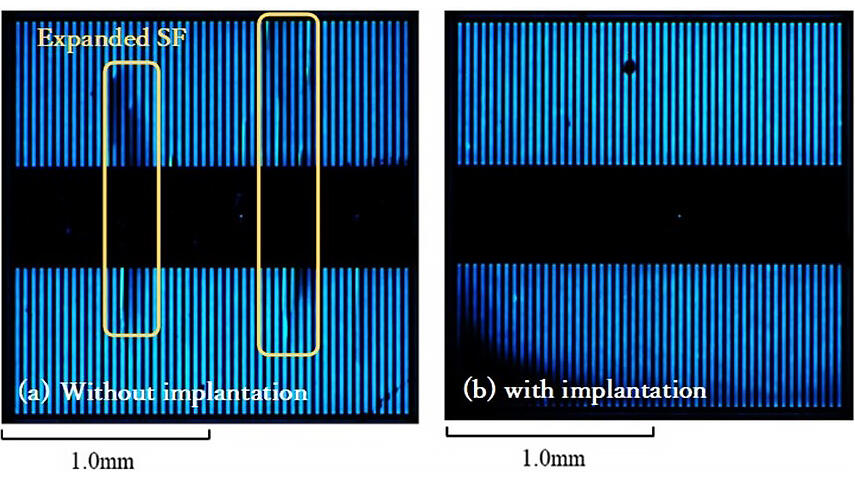A research team led by Associate Professor Masashi Kato of the Graduate School of Engineering, Nagoya Institute of Technology, Associate Professor Shunta Harada of the Institute of Materials and Systems for Sustainability, Nagoya University, and the company SHI-ATEX has successfully suppressed the expansion of crystal defects that degrade SiC power semiconductors by implanting hydrogen ions.
Crystal defects called stacking faults expand when the diode current increases in conventional SiC power semiconductors, and these expanded stacking faults increase electrical resistance. The research team introduced hydrogen and point defects near the epitaxial layer/substrate interface by hydrogen ion implantation using an ion accelerator with MeV acceleration energy. They worked to suppress the associated stacking defect expansion on the assumption that this would allow hydrogen or point defects to adhere to partial dislocations and stop their movement.
The team observed electroluminescence (EL) images of diodes fabricated by the developed process after a long current load test. EL is observed through electrodes with stripe-shaped windows formed on the epitaxial surface, and since stacking faults are dark areas in the EL image, their presence or absence allowed them to determine whether there was stacking fault expansion. When diodes were not implanted with hydrogen ions, they observed dark areas in several locations, indicating that the stacking defects expanded. On the other hand, they did not observe any stacking faults with hydrogen ion implantation. It was clear that hydrogen ion implantation suppressed the expansion of stacking faults and could be a technique to solve bipolar degradation.

Provided by Nagoya Institute of Technology
"We will continue research and development to find the optimum conditions for hydrogen ion implantation that will enable both performance and long-term reliability of SiC power semiconductors, with the aim of providing this technology to manufacturers in the future," explained Associate Professor Kato.
Journal Information
Publication: Scientific Reports
Title: Suppression of stacking fault expansion in a 4H-SiC epitaxial layer by proton irradiation
DOI: 10.1038/s41598-022-17060-y
This article has been translated by JST with permission from The Science News Ltd.(https://sci-news.co.jp/). Unauthorized reproduction of the article and photographs is prohibited.




